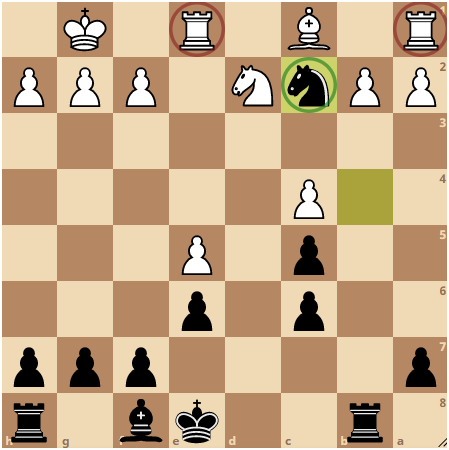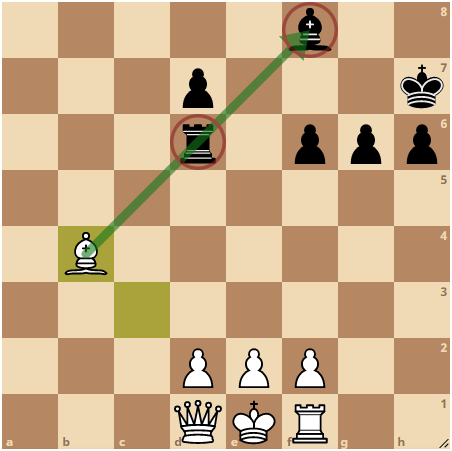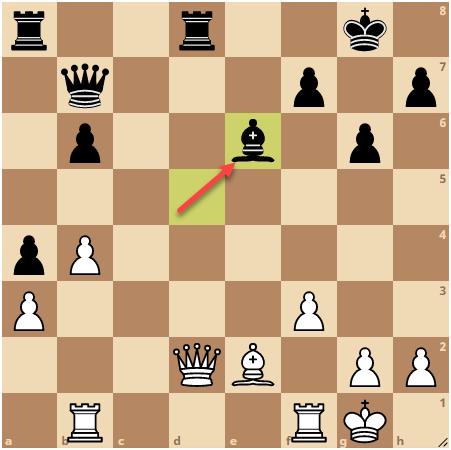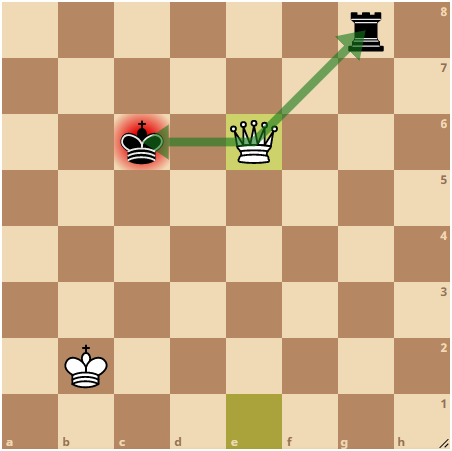Principles of Attacks in Chess

An attack is a great form of defense in itself and playing an aggressive, strong game from the beginning gives a player a significant advantage throughout the game. However, to play an attacking game like this, one has to remember the principles of attack.
Let’s take a look at some of them.
Exploit your opponent’s weaknesses
Take advantage of isolated or backward pawns to gain material or positional gains. Further, try to occupy the outpost squares available and control the centre to the best of your capabilities. Try to look for loopholes in your opponent’s game and exploit them as aggressively as you can.
Defend your pieces first
Before attacking your opponent’s pieces, it is important to make sure that your own pieces are safe and secure. Your first and most important priority is always your King, and you must always make sure it is safe and protected from any possible attack.
Make a strategic exchange
When exchanging pieces, try to gain something out of the exchange, either material, positional advantage or double pawns. If possible, try to exchange an attacking piece that your opponent holds for a less active piece that you possess. In some situations, for example, if you are White, try to exchange Black’s dark square Bishop for White’s dark square Bishop and vice-versa if you are Black. Same-colored square Bishops are sometimes considered to have a slight advantage in the game.
Try making aggressive moves
It may not be possible for every move you make to be attacking but try to make moves that control central squares, outpost squares, or attack the opposite pieces. Use your available resources to pose any amount of threat with every move.
Strengthen the attack
If you find yourself in a position where you have a piece posing a threat, you must add other minor or major pieces to strengthen this attack. Try to capture or exchange the defenders to make the threat stronger and utilize every move to add more and more pressure on your opponent.
Now that we have the principles defined, we must move on to understanding the different types of attack possible in a game of chess. Keeping in mind the key concepts behind these attacks is imperative at all points.
Let’s discuss the three main types of attacking tactics :
1. Fork
A fork is a tactic that attacks two pieces at once, allowing a player to gain material. The Knight is the most common piece that poses a fork, while other pieces that pose a fork are the pawn, the Bishop, the Rook and the Queen. When the pieces under a fork are the King and the Queen, the fork is called a Royal fork, while if the King, Queen and the Rook are under a fork, it is called a Family fork.

2. Pin
A Pin is a type of attack where two pieces that are in the same line are attacked by a pinning piece. A weaker piece is between the pinning piece on one side and a stronger piece on the other, forcing the pinned or weak piece in the middle to remain fixed on that particular square to protect the stronger piece behind. If the stronger piece behind is the King, it is called an absolute pin, while any other pin is referred to as a relative pin. Pieces that can pose a pin are the Bishop, the Rook and the Queen.

3. Skewer
A Skewer is very similar to a Pin where two pieces fall under attack in the same line, but the stronger piece is the pinned piece and is directly under attack by the attacking piece, with a weaker piece behind it in the same line. Pieces that can pose a skewer are the Bishop, the Rook and the Queen. If the stronger piece ahead is the King, just like a pin, this is called an Absolute Skewer, while the other type of Skewers are called Relative Skewers.

Other tactical variations of forms of attacks in chess are mentioned below:
1. Discovered Attack
A Discovered Attack is a type of attack that is revealed only when the piece ahead of the attacking piece moves. A Discovered attack usually leads to a gain of material and is a very powerful attack. If the piece under attack, on moving the middle piece, is the King, this form of attack is called a Discovered Check. This type of attack also helps players to gain tempo. A better explanation of a Discovered Attack is provided in the example below.

2. Double Attack
Here, one move allows two pieces to pose an attack on the opposite piece. This can seem slightly complex; hence it is better explained with the example below.

Apart from knowing the principles of an attack or the types, finding the key time to attack is most imperative. Without finding the right time to play an aggressive game, any amount of attack is futile. Let’s take a look at a few pointers to remember to decide when to pose an attack.
- Make sure your pieces are safe and your King is protected.
- Always attack when you have an advantage or are material-up.
- If you have control over files that can pose an attack on your opponent’s King, exploit this positional advantage.
Deciding whether to defend or attack is always based on your position; in some situations, you cannot play an attacking game and must choose to defend. Similarly, when the position demands it, exploit every opportunity to attack. The same is to be kept in mind when attacking the opposite King.
Kingside attacks always work if the squares a King can move to have been restricted, allowing an edge of the board checkmate. It is important to use all pieces to participate in posing a kingside attack, as this allows you to cut as many of your opponent’s squares as possible. Hopefully, these pointers on attacks will be beneficial when you prepare your attacks in your game.
We hope that these pointers prove helpful to you and improve your game. If you have any tricks up your sleeve or doubts that you would like answered, please do share them in the comments below we would love to hear from you.




